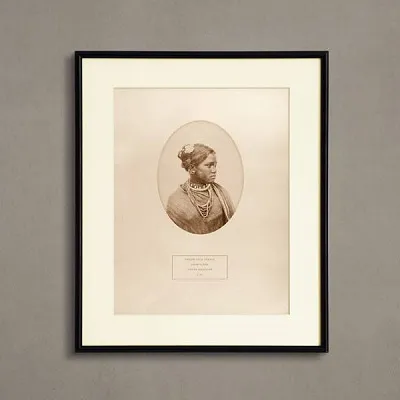'Your idea is only as successful as your perseverance': Jassu Sekhon, Founder, Calcutta Restoration Company
A tale of two startups
Jassu Sekhon and her husband Amit Sinha returned to India in 2011 after many years in the US, to be a part of the fast-changing Indian city life. They settled down in Amit’s hometown Kolkata and started up a design studio called Salt Architects. While setting up their home, the only furniture that appealed to the cosmopolitan couple were the clean simple lines of the colonial era. But most of the city’s antique dealers displayed the heavy wood ornamental furniture that were all wrong for apartment living. “On the rare occasions that we did find them, we were completely enamoured by their character, craftsmanship and the restraint shown in their construction,” Jassu says. But these finds were few and far between.

“After buying our first few pieces, we could no longer find more. So we spent the next few months traveling the countryside, building a network of middlemen who could help us procure more pieces. We didn’t realize it then but it was the beginning of an addiction that turned us into die hard collectors.
We filled up the house with barely any room left to move, then our office and finally rented a go down where we could start storing these pieces. It was difficult to stop and we were quickly running out of space and funds, but we needed to feed our addiction and Calcutta Restoration Company was the only way out,” says Jassu.
The couple now found themselves helming two startups: one dealing with the past and the other the future. While Amit and Jassu’s design studio is all about industrial design and modern silhouettes, their work with Calcutta Restoration Company takes them down the bylanes of history and romanticism.
Calcutta Restoration Company
Though they’d been collecting period furniture since 2011, Calcutta Restoration Company was officially launched in 2014. Jassu confesses that it was started quite reluctantly: “Like any collector hesitating to part with their finds, we started Calcutta Restoration Company quite reluctantly. But then it taught us the joy of sharing with others who were also looking for the same thing. Most people buy a piece from us because it rekindles a distant memory. Being able to facilitate that connection is very satisfying.”

On the name of the startup, Jassu explains, “This venture is clearly borne out of this city, its craftsmen and the families who have used and cherished these pieces for generations. No other place in India could have inspired and influenced the work we do in the same manner. Also, most of the pieces we procure are in a state of disrepair and need to be brought back to their original state. The process of restoration is therefore integral to the work we do.”
Design dilemma
Talk of vintage Bengal furniture usually evokes specific kind of images in our minds. Think Devdas, Lootera, Parineeta and/or any number of Tagore’s big-screen adaptations. Heavily carved teak four-poster beds, giant gilded cheval mirrors, ornate tables with heavy claws etc. These pieces were the norm of the Zamindari age when their purpose was to display wealth and grandeur.
But the confluence of the Bengal Renaissance and European aesthetics pushed for a more sophisticated expression of taste and style, where subtlety and restraint reigned supreme and enabled the production of a wholly different kind of furniture. Retaining the exquisite craftsmanship that is the defining statement of that era, but becoming more streamlined and minimalistic, these pieces of furniture are reminiscent of the time in history when aesthetics began to give in to functionality.

Jassu and Amit are no antique dealers. They are designers at heart and through the Calcutta Restoration Company they salvage a rapidly disappearing art. Jassu says,
We work in close association with a network of dealers and collectors. Each piece needs to make the cut before it makes it to the website. This selection is based purely on the design of the piece, its simplicity and its suitability in today’s context. The authentication is done by studying the construction of the piece, its style, joinery, quality of wood used, polish etc.
She continues, “Every piece brings with it its own story embedded in its construction and style; a stamp if we are lucky. Its imperfections and erosions; hidden photos, newspaper clippings tell us about its past. A relationship is built with each piece, starting from the hunt all the way up to the end of the restoration process when the story is completely and finally revealed. This process of discovery is unique to every piece.”
Challenges and growth
Calcutta Restoration Company has surpassed the couple’s expectations with the positive reception they have received from collectors and enthusiasts all over the country and internationally. “The response has been overwhelming, from young professionals setting up their first home, to retirees looking to furnish their second homes,” says Jassu.

Since they don’t have mass market pieces, the challenges the startup faces in catering to this reception have been the predictable few. “Being a purely online store, Calcutta Restoration Company faces the usual logistical challenges of any new venture,” she explains.

The venture is self-funded and the couple are not ambitious about its scaling plans. Echoing their love for the design and historical aspects of their work, Jassu says, “We do not harbour the same business goals as other entities that do. We cater to the discerning buyer who sees it as buying an asset.
To this buyer, the end product is as important as the history and the process that has gone into restoring or making a piece. We would like to continue introducing new pieces and widen our reach. We have been shipping both domestic and internationally. No particular growth targets though.” They have turned down funding offers from angel investors, preferring to go solo to maintain the core integrity of the venture.
Advice
It’s impossible to conclude this article without reflecting on the ironies of Amit and Jassu’s startup journey where the duo are simultaneously cradling extremes. Their first startup is a rigorously planned culmination of their professional training while the second one is a serendipitous creation from an accidentally discovered hobby. The first deals with the vagaries of modern living while the latter delves deep into the poetry of the past. Amidst switching her work from the past and the future Jassu offers wisdom that time cannot wither:
Your idea is only as successful as your perseverance.







